Media | Articles
Fighter Pilot Diaries: Weather you get home alive
This column is part of a series from “Josh Arakes,” a senior U.S. military pilot who has obtained permission to share some of his life with Hagerty. Josh’s writing orbits the intersection of cars, the rigors of military aviation, and how we all think and work under pressure. Enjoy! —Ed.
Years ago, I was stationed with a fellow fighter pilot. One I didn’t know well, though I had heard only good things. We were in separate squadrons and he was a couple ranks above me, so we never really talked.
Late one Friday afternoon, that individual was leading a flight of jets home after being off-station at an exercise for a week or two. The pilots had done all the appropriate flight planning. They knew the weather was good enough to make the trip, but it wasn’t what we call CAVU (clear and visibility unrestricted).
After hours of flying cross-country, that flight was less than an hour from arriving back at home station when Air Traffic Control (ATC) called to warn of worsening conditions. Lacking a weather radar, that lead pilot opted not to divert to another airfield, a choice that would have let him avoid the line of storms between the jets’ current position and their home field. He instead relied on ATC to help avoid the worst of the weather.

ATC did the best they could, but the jets still flew through some gnarly conditions. Not until they landed at home did they realize that his decision to push through had resulted in damage to the aircraft. It wasn’t a lot, but no jet in the formation got away unscathed.
Marketplace
Buy and sell classics with confidence
In military flying, when a pilot is at-fault for damaging—or in the worst case, destroying—an aircraft, can have a variety of outcomes. The severity of the punishment depends on a number of factors, none of which are important here. I can’t discuss the details, but the ensuing investigation essentially determined the pilot had suffered from a temporary condition that clouded his judgment.
The condition? Get-home-itis.
***
My wife and I recently took two of our kids, both of them high-school age, on separate weekend trips. She and our youngest flew out of state to visit friends. Our second youngest and I drove to a closer state to spend time with family.
Our 550-mile drive out took about eight hours and 15 minutes and was pleasant. After an awesome weekend of fun, laughter, and good food—not to mention this game we play where we hide Twinkies all around their house for people to randomly find in the weeks and months to follow—it was time to return home. (For the record, that family group does the same Twinkie thing when they come to our house.)
There are two primary ways to drive between the town where my family is now stationed and the home of the extended family my daughter and I visited. Both routes are almost entirely on the interstate, but one is 55 miles longer.
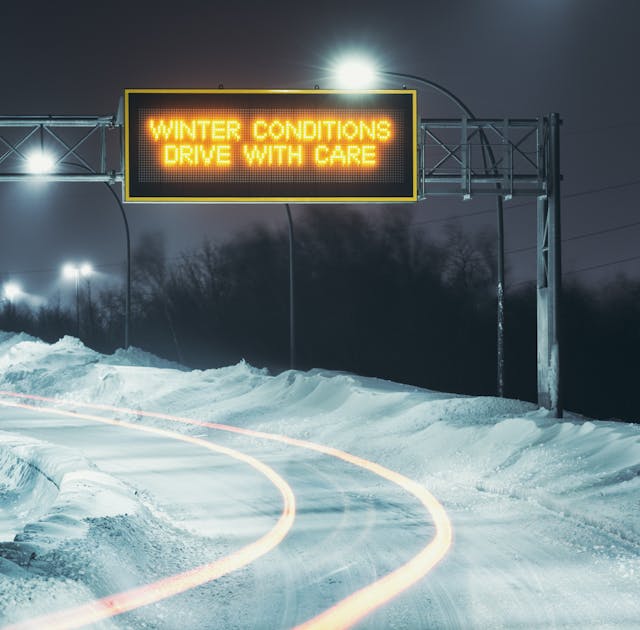
All else being equal, the obvious choice would involve taking the route shorter in both distance and time. However, that route is more southern, and it has guaranteed traffic issues which, absent an oh-dark-thirty departure, routinely add around 90 minutes to the drive. In short, the longer northern route frequently makes the most sense but is prone to nastier weather, so care must be taken.
To that end, I had been tracking a storm all weekend. The system was moving into the area of our northern drive and set to drop less than an inch of snow the day before we left for home. As we went to sleep that night, I was confident in my choice—we would use the longer southern route. The next morning, we woke shortly before 6:00 and were out the door in about 20 minutes. I felt no need to check the weather again.
Not until we’d been on the road for around 45 minutes did I ask my phone to map the drive, to get an idea of our ETA. I was surprised when it kept directing me to turn around and take the southern route. Confident the algorithm would soon realize it was no longer actually shorter to go south, I ignored the software’s repeated pleadings, scoffing at its “recalculating” beeps.

Later, after more than an hour on the road, the phone continued to think south was the way to go. Growing annoyed, I restarted the maps application and reentered my home address, convinced the silicon would figure itself out. Crazily enough, it again insisted we turn around.
I zoomed out and saw the reason. About two hours ahead, the freeway was closed.
I was now faced with a conundrum: Use my phone while driving, to figure out if the freeway was actually closed—and if so, why and for how long? Should I pull over and repeat the aforementioned search while not driving? Wake my sleeping teenager and ask her to figure out what was going on, or call / text my wife or another family member for help investigating?
Let’s be honest—waking the teenager was clearly the worst option. However, my weather monitoring had left me certain that the road had been closed for an accident, not snow, and was thus unlikely to remain closed for an inordinate amount of time. With some two hours between us and the closure, I opted to continue driving, then reach out to family once it wasn’t so early in the morning.
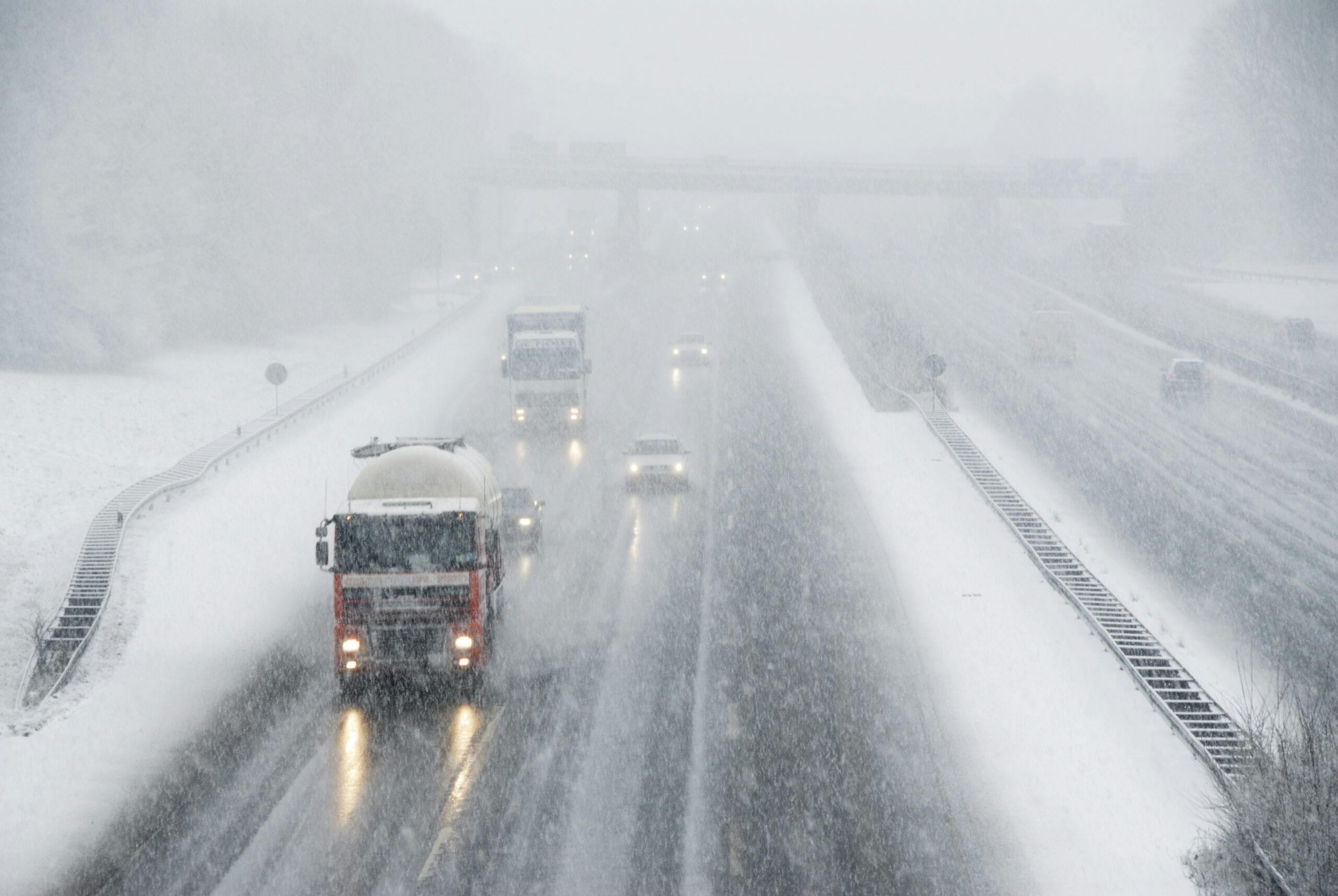
An hour later, I texted with my brother-in-law. He confirmed the freeway was in fact closed, and that it would remain so for the rest of the day. I had already mapped out a smaller highway that would take us to the southern route. As far as he could tell, he said, all other roads were open.
We pressed on happily, another hour passing before we reached the closure, exited the freeway, and pulled into a parking lot.
I got out my phone again and did some quick searching. Sadly, all roads to the southern freeway were now also closed. I had apparently done a good job of monitoring the weather along our originally planned route, but its more uninhabited northern stretches had gotten hammered with snow.
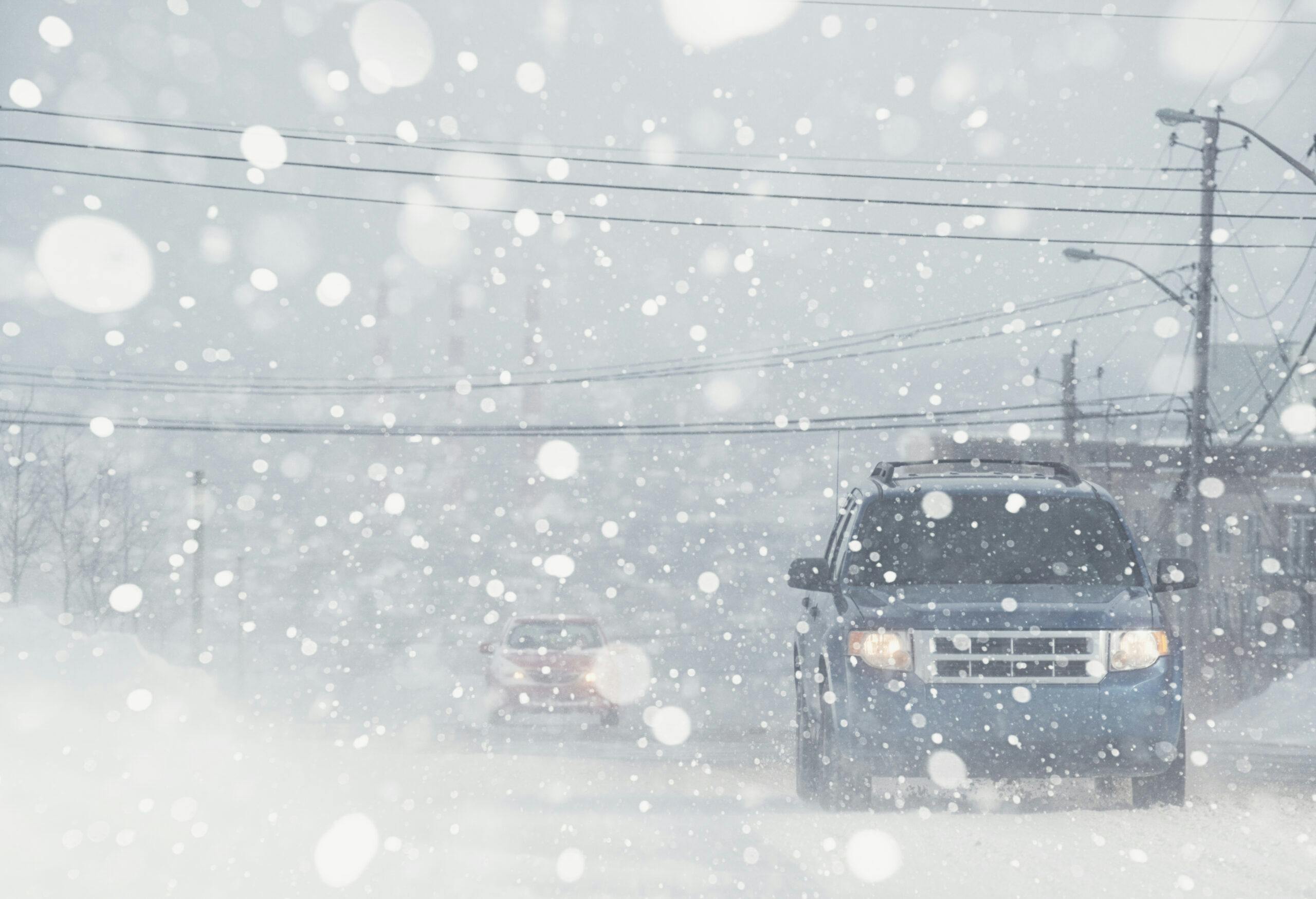
We had two choices: drive nearly all the way back to the house of our relatives in order to transition to the southern route, or head even farther north. Neither option was great. We’d already been on the road for three hours, and retracing to the southern route would mean another 12 at the wheel. Heading north meant only 9.5 more hours of driving, but the state’s Department of Transportation website warned of black ice there, plus heavy winds and blowing snow.
Opting to eat a warm turd sandwich instead of a cold turd sandwich, we turned north; even with black ice, I reasoned, the extreme northerly route had to be faster than essentially returning to where we started. We’d driven three hours yet were effectively only 27 miles closer to home.

Knowing what was ahead, we searched local stores for tire chains but failed to find any that fit my 2016 Mazda 6. Should I have purchased them earlier? Maybe, but I don’t need chains for that car; I have other vehicles, with chains, that I take to snowy places.
My weather monitoring had convinced me chains wouldn’t be needed on this trip, thus our choice to take the Mazda, our most fuel-efficient vehicle. Fortunately, I’m not a total idiot, so we had plenty of food, water, blankets, and a camp stove in case we needed hot chocolate. With empty bladders and full water bottles, we climbed back into the car, determined to push through.
It was Sunday. Waiting a day for roads to clear wasn’t a great option—my daughter had school the next morning, and I had to go to work.
What was that condition again? Oh, yeah: get-home-itis.
***
Our travel north began ominously. We pulled onto the shoulder of a narrow, two-lane highway to let an ambulance pass, then ended up pseudo-ambulance chasing for nearly ten miles until it finally turned off onto another road. The pavement was in good shape until then, but the DOT’s website had warned of black ice ten miles up the road, and reality didn’t disappoint. Ditches were filled with cars, trucks, and trailers that had slid off or jackknifed.
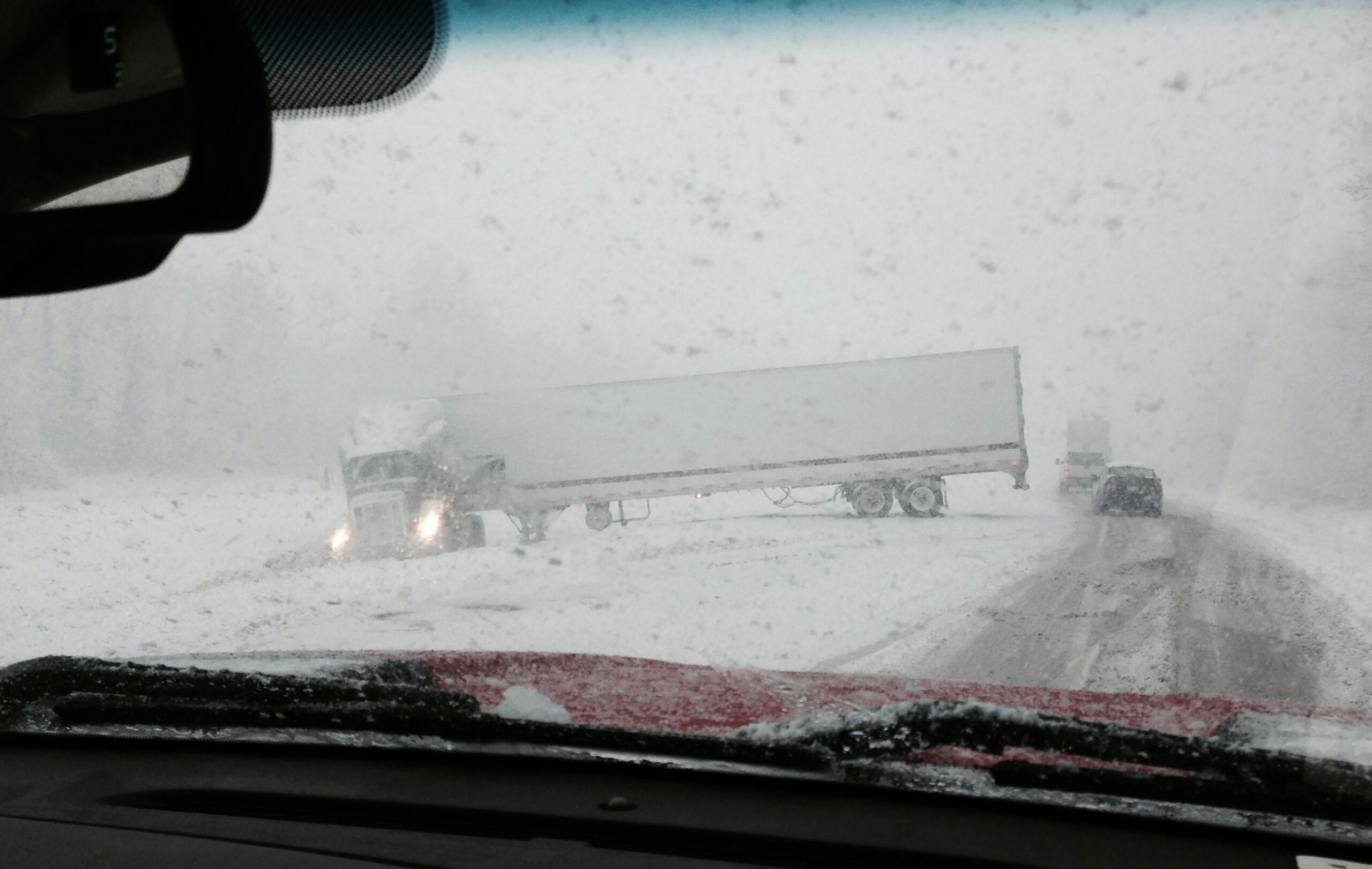
Fortunately, the road improved after a few miles, letting us go faster than a crawl. In addition to the ice, the blowing snow, and the single-digit temperatures, I was concerned about my lack of familiarity with the area—worried that, because I hadn’t verified the conditions of every road on our modified route, we’d encounter another closed highway.
I did find it encouraging that there were so many semis headed both directions. (My Hollywood-inspired vision of truckers involves them telling each other if the road ahead is closed. Though, as we’ve previously established, I’m no trucker). My phone mapping app also showed the roads as open.
All of that anecdotal evidence convinced me to keep going until conditions were either totally unsafe (as opposed to our current, mostly unsafe situation) or until the roads were closed.
Hours later, our winding, back-road route finally rejoined an open interstate. We had bypassed the worst of the storm, and the freeway was in excellent shape, so I set the cruise control and pointed for home. Unlike the previous hours, driving no longer required my full attention. My daughter was immersed in a book, and I was listening to a podcast, as we came upon a truck towing a trailer.

Imagine my surprise when a big dip in the road launched an eight-foot piece of four-by-four lumber out of that trailer. We were in the right lane–I wasn’t quite close enough to change lanes and initiate the pass (and you all know how I feel about that). As I started braking, I realized the board’s trajectory would take it into the left lane and then the center median. When it landed in the median, it quickly came to a stop in a cloud of dirt.
I downshifted, floored it, and made a quick pass. As I did, I looked over the rest of the trailer’s load—it appeared to be well secured, so I opted to not get the driver’s attention.
Twelve hours and fifteen minutes after we departed, we pulled into our driveway, no worse for wear save muscle stiffness (we had stopped the car only twice) and an excessive consumption of junky road-trip food.
***
The aforementioned mishap pilot briefed all aircrew at our base as to what happened, allowing us to learn from his mistakes. Unlike him, my case of get-home-itis wasn’t severe enough to produce injury or accident. Regardless, my flight training has instilled in me a need to learn from everything, even if nothing “bad” happens; a fortunate outcome doesn’t mean that you didn’t make a stupid decision.
I’ve made that same drive since. Two of our kids also made it while on spring break from college. I am now much more diligent about checking weather and DOT websites, and, to my wife’s chagrin, I even had the kids head home one day early once, so they could beat marginal weather.

Fighter pilots talk of working to fill up the “clue bag” before the “luck bag” runs empty. One of the ways to fill the clue bag is by learning from experience, whether someone else’s or your own.
There will likely never be a way to gain full immunity from get-home-itis, but a full clue bag makes for an excellent inoculation!
***
Check out the Hagerty Media homepage so you don’t miss a single story, or better yet, bookmark it. To get our best stories delivered right to your inbox, subscribe to our newsletters.
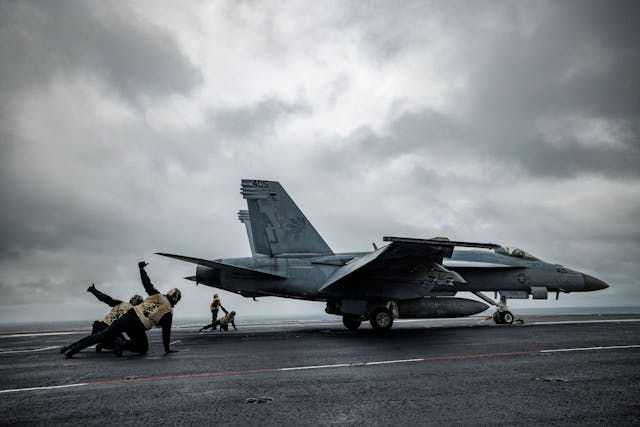




















After losing the Super Bowl, star quarterback Jalin Hurts remarked,”you either win or you learn”. Sounds like you learned…
Trying to!
Josh great story as always, keep up the good story telling. Oh one question, what do you do with a know it all that does not have a clue and has run out of luck? 🙂
That sounds like a comically poor combination and one I don’t want to be anywhere near, especially on a road.
Had a similar situation driving home from my parents. 380 miles of interstate ice storm that started as rain. No cell phone or gps, just went slow and steady. Did have one moment of amusement as the person that flew by me ended up in the ditch. Hope they stayed warm that night.
380 miles? That’s a long way to crawl through ice. Our trip I talked about here wasn’t nearly that distance.
I was taking the family to Florida in a light plane once. I had done the weather planning well, but got delayed; arriving in Florence about the same time as the edge of a frontal system. The weather experts gave me a course around it, so I filled the tanks and we took off. I was just getting ready to turn for the coast when departure control came on. “Maule 3162 Quebec, are you radar equipped?”
The pucker factor went up quite a bit then.
Josh, your story reminds me of a time when I also had a bad case of Get-there-itis. I was leaving a vacation spot on a Sunday evening with snow predicted. I did not bother to check on the severity of the predicted snowfall. About one-half hour into the usually two hour trip I encountered white out blizzard conditions. It was on a winding rural two-lane state highway. I could not see the shoulder of the road or more than 15 feet ahead of me. Not knowing what might be behind me, I was afraid to stop. I put on my emergency flashers and continued ahead at no more than 10mph. Not having any points of reference on an unlit rural highway, I decided to adjust the in-dash GPS to give me the highest resolution possible. I would not recommend this ersatz “flying by instruments” but between that and my familiarity with the road I made it to the next town without incident. I pulled off at a gas station and waited for the weather to clear.
Years later I found out that there is an aviation equivalent to my clueless misadventure: Unplanned VFR (visual flight rules) into IMC (instrument meteorologic conditions) which is fatal in 3 out of 4 cases. In my case IMC stood for I Might Crash. Thanks for story.
I always enjoy Josh’s columns – so relatable!